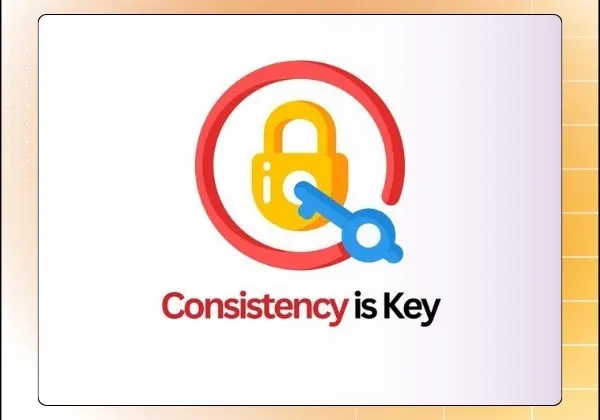Content marketing for SEO is one of the most effective ways to improve your website’s visibility, rankings, and long-term organic traffic. As search engines evolve, businesses can no longer rely solely on traditional SEO tactics like keyword stuffing or link-building. Instead, they must focus on creating high-quality content that matches user intent and adds real value.
In today’s digital landscape, successful SEO strategies are powered by meaningful, consistent, and optimized content. Whether it’s blog posts, videos, or infographics, content helps you connect with your audience, answer their questions, and position your brand as a trusted resource.
In this blog, we’ll explore how content marketing for SEO works and the strategies you can use to achieve better rankings and engagement. From keyword research and content creation to pillar pages, backlinks, and on-page optimization, we will cover everything you need to drive measurable results.
Research and Create a List of Keywords
Keyword research is the foundation of content marketing for SEO. It helps identify what your target audience is searching for and guides the direction of your content.
- Types of Keywords:
- Short-tail keywords (e.g., “SEO”) bring volume but high competition.
- Long-tail keywords (e.g., “best SEO tips for bloggers”) offer lower competition and higher intent.
- Question-based keywords (e.g., “How does content marketing improve SEO?”) are ideal for voice and featured snippet optimization.
- Top Tools to Use:
Google Keyword Planner, Ubersuggest, Ahrefs, and SEMrush are excellent for finding and analyzing keyword data. - Group by Search Intent:
- Informational (e.g., “what is content marketing”)
- Transactional (e.g., “buy SEO tools”)
- Navigational (e.g., “Ahrefs pricing page”)

Pro Tip: Analyze competitors’ top-performing content to identify high-impact keywords you might be missing.
Create High-Quality Content Format to Drive SEO Results
At the heart of every successful strategy in content marketing for SEO is high-quality content. But what exactly defines “high-quality”?
- Key Attributes: Original, valuable, well-researched, engaging, and aligned with user intent.
- Top-Performing Formats: Blog posts, videos, infographics, podcasts, eBooks, and visual carousels.
- Performance Benefits:
- Increases dwell time (how long users stay on your site).
- Boosts engagement (comments, shares, likes).
- Enhances backlink potential (especially with research-heavy content and visuals).
- Match Content to User Intent:
Use how-to guides for informational keywords, product demos for transactional keywords, and landing pages for navigational queries. - Repurpose Strategically: Turn a blog post into a LinkedIn carousel, a video summary for Instagram Reels, or a podcast discussion for Spotify.

Build a Strong Content Pillar and Cluster Strategy
Creating a content hub through pillar pages and topic clusters is one of the most effective techniques in content marketing for SEO.
- What Are They?
A pillar page is a comprehensive piece of content on a broad topic. Cluster content covers subtopics in depth and links back to the pillar. - SEO Benefits:
- Enhances internal linking and crawlability.
- Improves topical relevance.
- Increases time-on-site and provides a better user experience.
Example:
Pillar = “Ultimate Guide to SEO”
Clusters = “On-Page SEO Tips,” “Technical SEO Checklist,” “Link Building Strategies”

Strategic Content Planning and Consistency
Consistency signals authority to both users and search engines. A well-structured content plan is vital to long-term success in content marketing for SEO.
- Use an Editorial Calendar:
Plan weekly or monthly posts using tools like Notion, Trello, CoSchedule, or Google Sheets. - Why It Matters:
- Frequent updates keep your site active and fresh.
- Google rewards consistent publishers with better visibility.
- Include Trends and Seasonality:
Use timely events, newsjacking, and seasonal keywords to stay relevant and attract trending searches.

Optimized On-Page for Content
You can’t talk about content marketing for SEO without nailing your on-page optimization.
- Header Hierarchy: Use H1 for titles, H2 for subheads, and H3/H4 to structure deeper points.
- Meta Elements: Craft compelling SEO titles and meta descriptions that include your focus keyword.
- Image Optimization: Add descriptive alt text, compress images for fast loading, and name files appropriately.
- Linking Strategy:
- Internal: Link to related content within your site to aid crawlability and keep users engaged.
- External: Link to reputable sources to boost credibility.
- Mobile Optimization and Speed: Ensure responsive design and fast page loading—both are critical ranking factors today.

Create Backlinks with Different Channels
Building backlinks is a cornerstone of content marketing for SEO, improving your domain authority and rankings.
- Why Backlinks Matter:
They signal trust and authority to search engines. - Effective Tactics:
- Guest posting on relevant blogs.
- Digital PR campaigns.
- Influencer collaborations.
- Broken link building outreach.
- Create Shareable Assets:
Content that earns links naturally includes:
- Original research or industry studies
- Infographics and visual explainers
- Free tools and templates
- Leverage Distribution Platforms:
Use LinkedIn, Medium, Reddit, and Quora to get your content in front of diverse, engaged audiences.

Final Take on Content Marketing for SEO
Effective content marketing for SEO blends strategy, optimization, and consistent execution. From thorough keyword research and valuable content creation to internal linking and backlink building, each component contributes to long-term search visibility and organic growth.
By applying these proven tactics, you not only enhance your rankings but also strengthen your brand’s authority and reduce customer acquisition costs. Whether you’re starting with a content pillar or refining existing blog posts, every step counts toward better performance. Focus on delivering value, staying consistent, and letting your content work as a long-term SEO asset.

